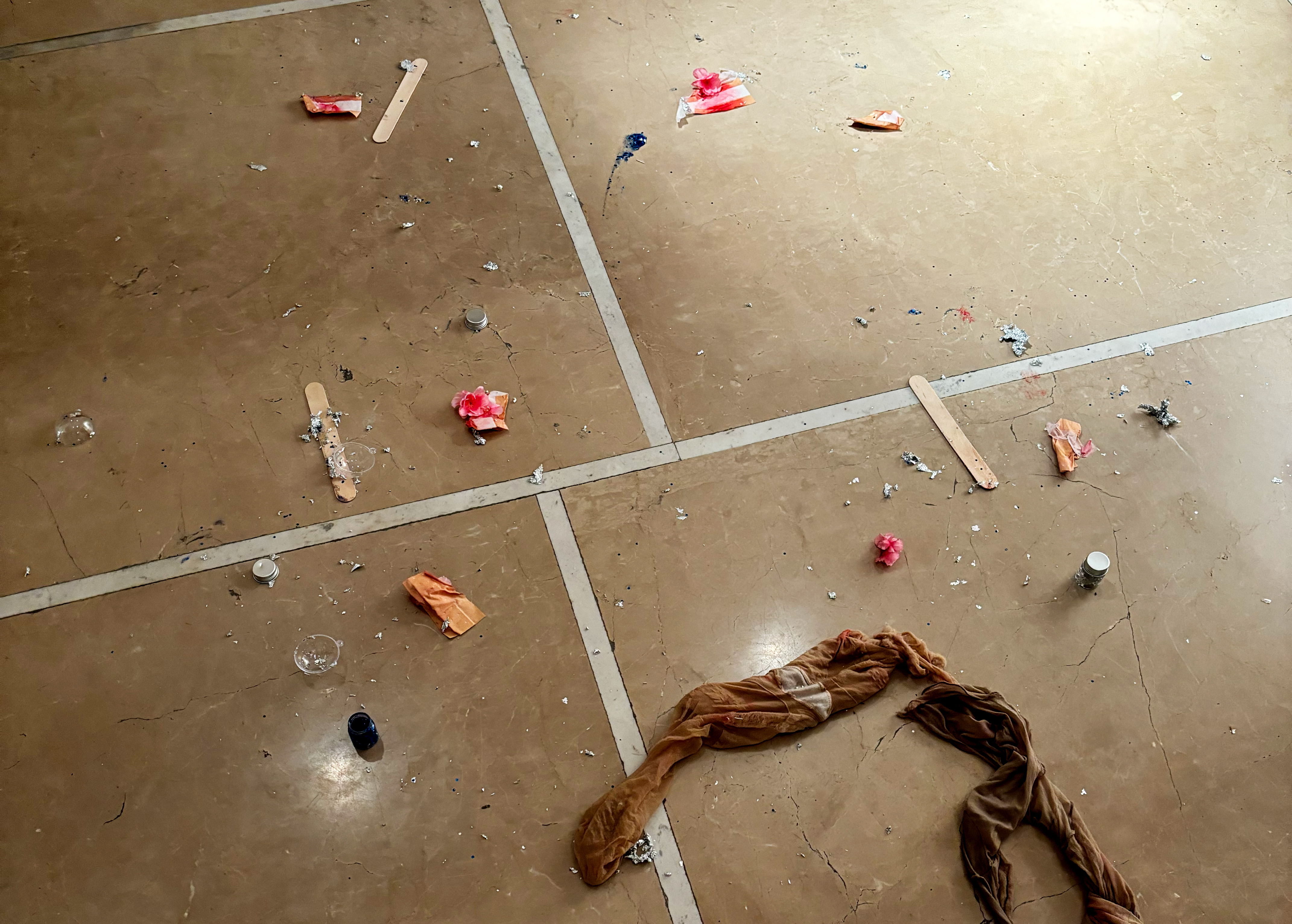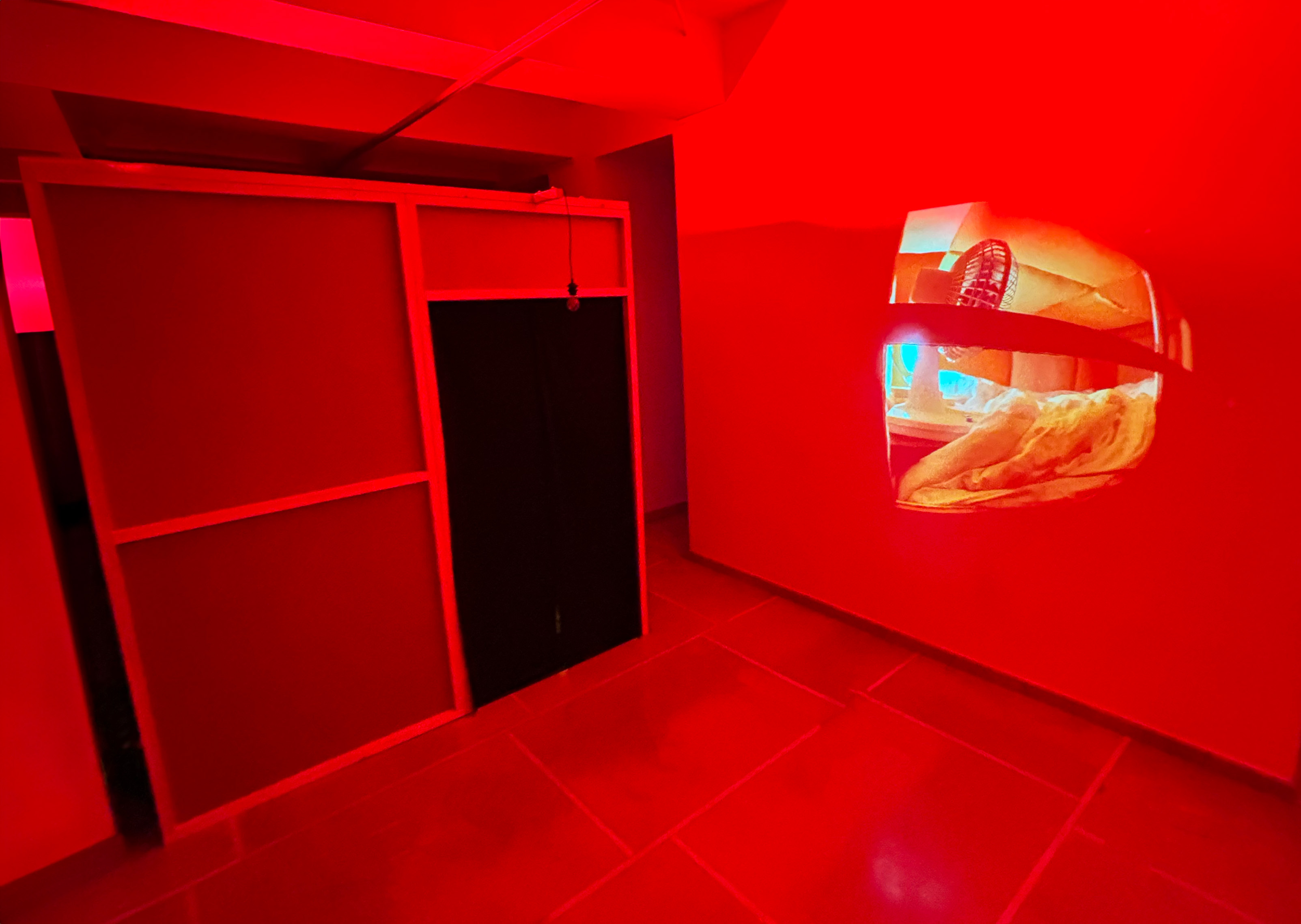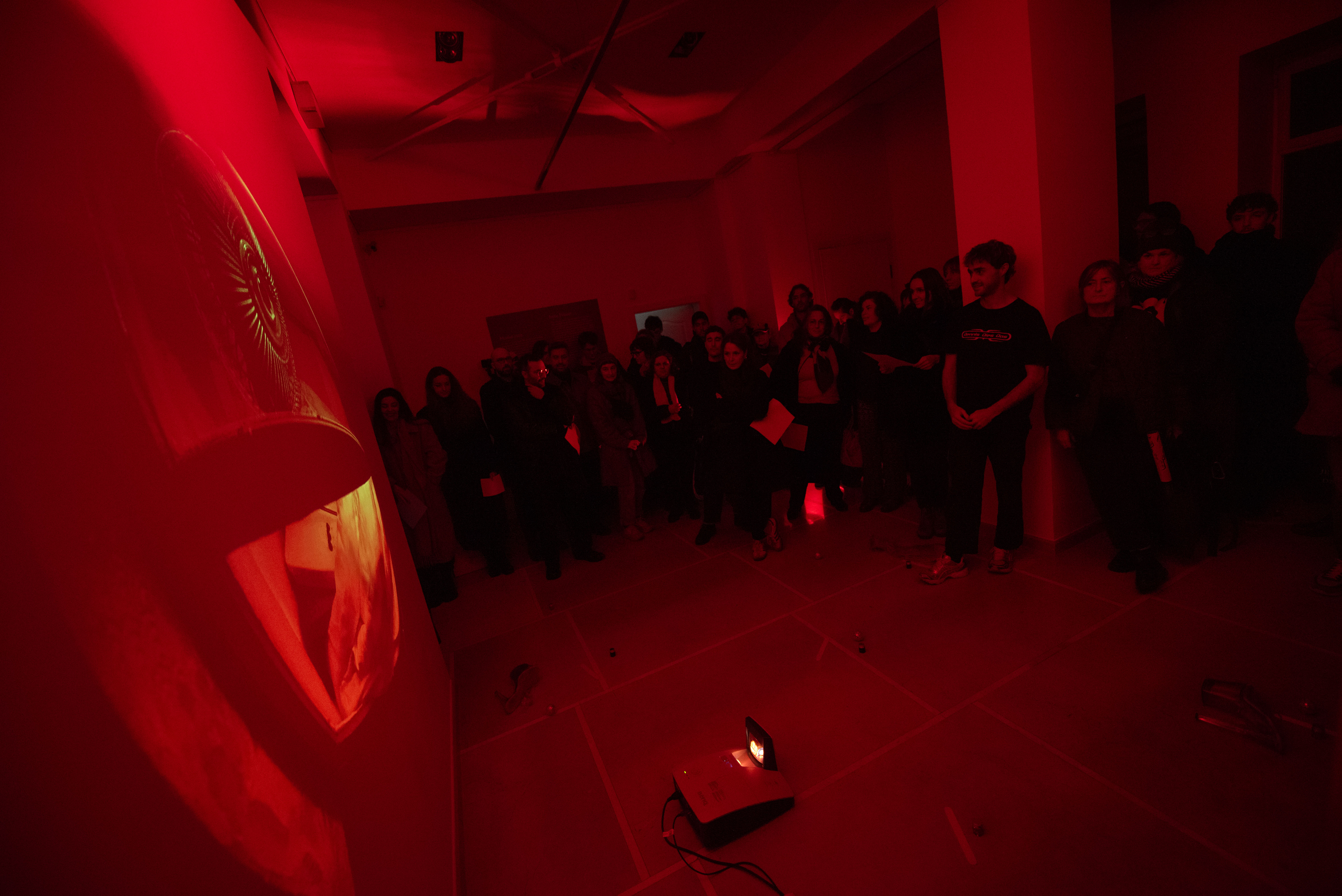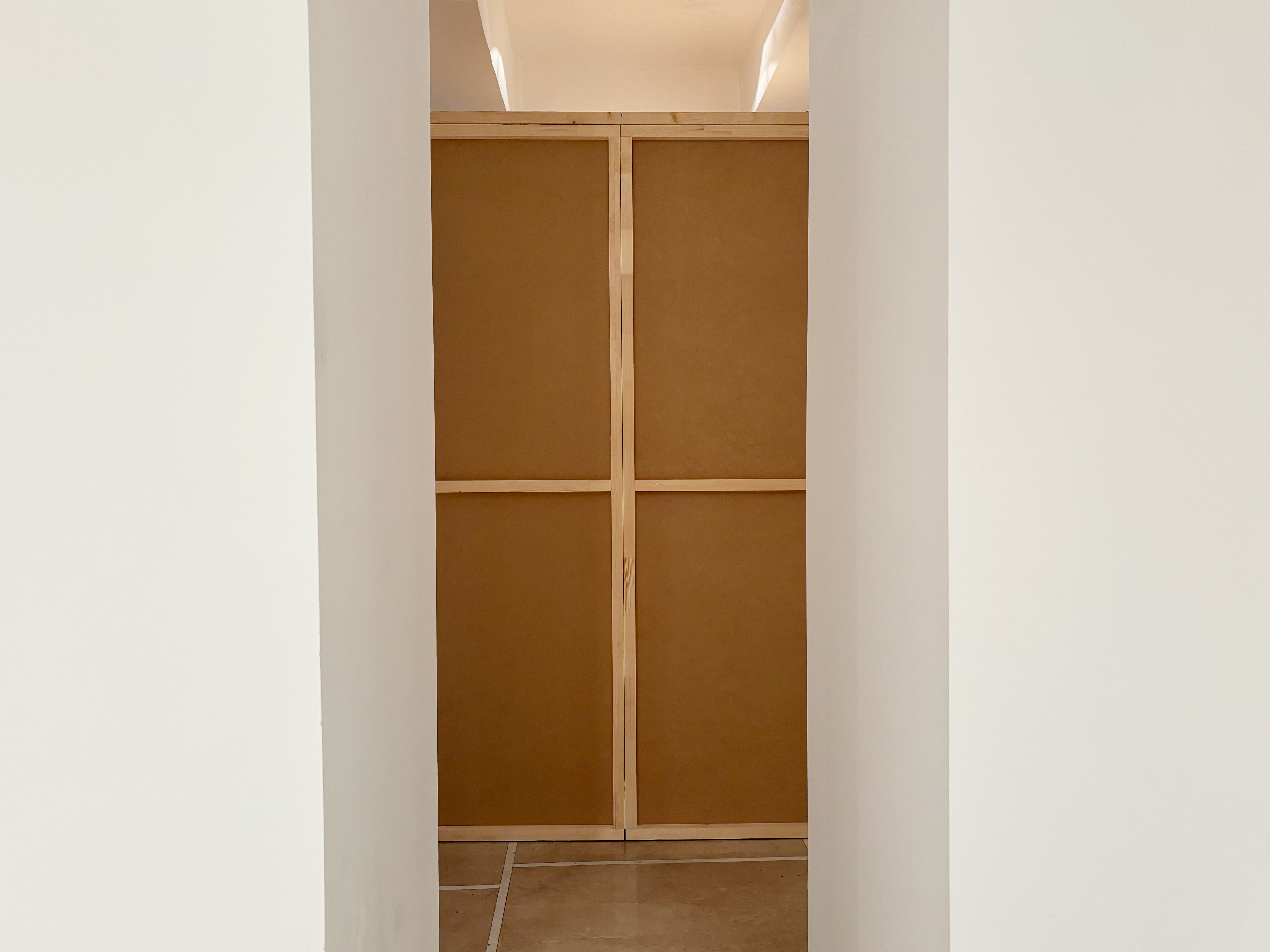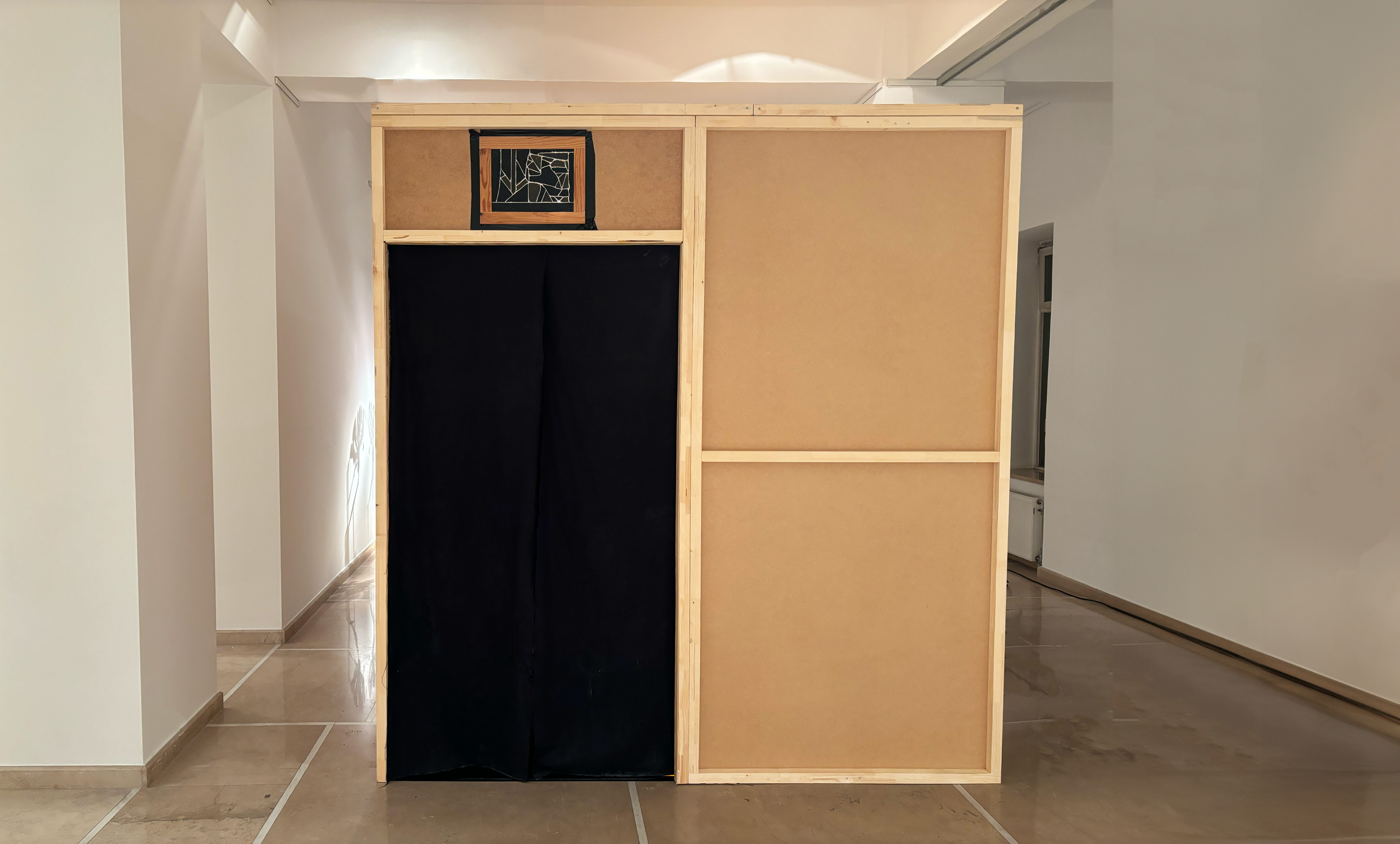Vincent Grange - About
The Madwomen of Chaillot (2025)
_hey wan_ _o break free (2025)
The House of Dorothy - Milano (2025)
Il Gioco dell’Oca di Dorothy (2025)
Dorothy’s Interior Boulevard (2025)
Dorothy’s Closet - Ljubljana (2024)
Dorothy’s Picnic Set (2024)
Dorothy’s Closet - Carouge (2024)
Dorothy’s Closet - Basel (2024)
La voisine qui en savait trop (2024)
The House of Dorothy - Carouge (2024)
Entre 70 et 75 degrés (2024)
The House of Dorothy - Geneva (2023)
Bonnie (2023)
First Encounter (2022)
Maison Sauvage (2022)
KETA1000 (2021)
L’Allégorie de la Caverne (2021)
_hey wan_ _o break free (2025)
“_hey wan_ _o break free” (2025) was exhibited as part of the group show “Eyes open, I breath again” at -> Alice Amati Gallery in London - curated by Samuele Visentin.
A vacuum cleaner with a bag full of glitter appears to have just collected the remnants of a party that took place last night at Dorothy’s house. This eccentric sculpture evokes the vacuum cleaner used by Freddie Mercury in drag in the Queen’s I Want to Break Free video, which became an icon of subverting expectations around gender identity. A playful monument to challenging gender stereotypes and rebelling against domestic labour, the vacuum cleaner, upon closer inspection, also suggests a darker reference. The colours of the glitter match the trans flag, and the cleaning it has undergone might allude to an attempt to erase the rights of the community. Glitter, a material often considered frivolous and linked to celebration and fun, transforms into a symbol of resistance and a reminder to stick together in the face of threats of our time.
Text by Lucrezia Visconti Calabro



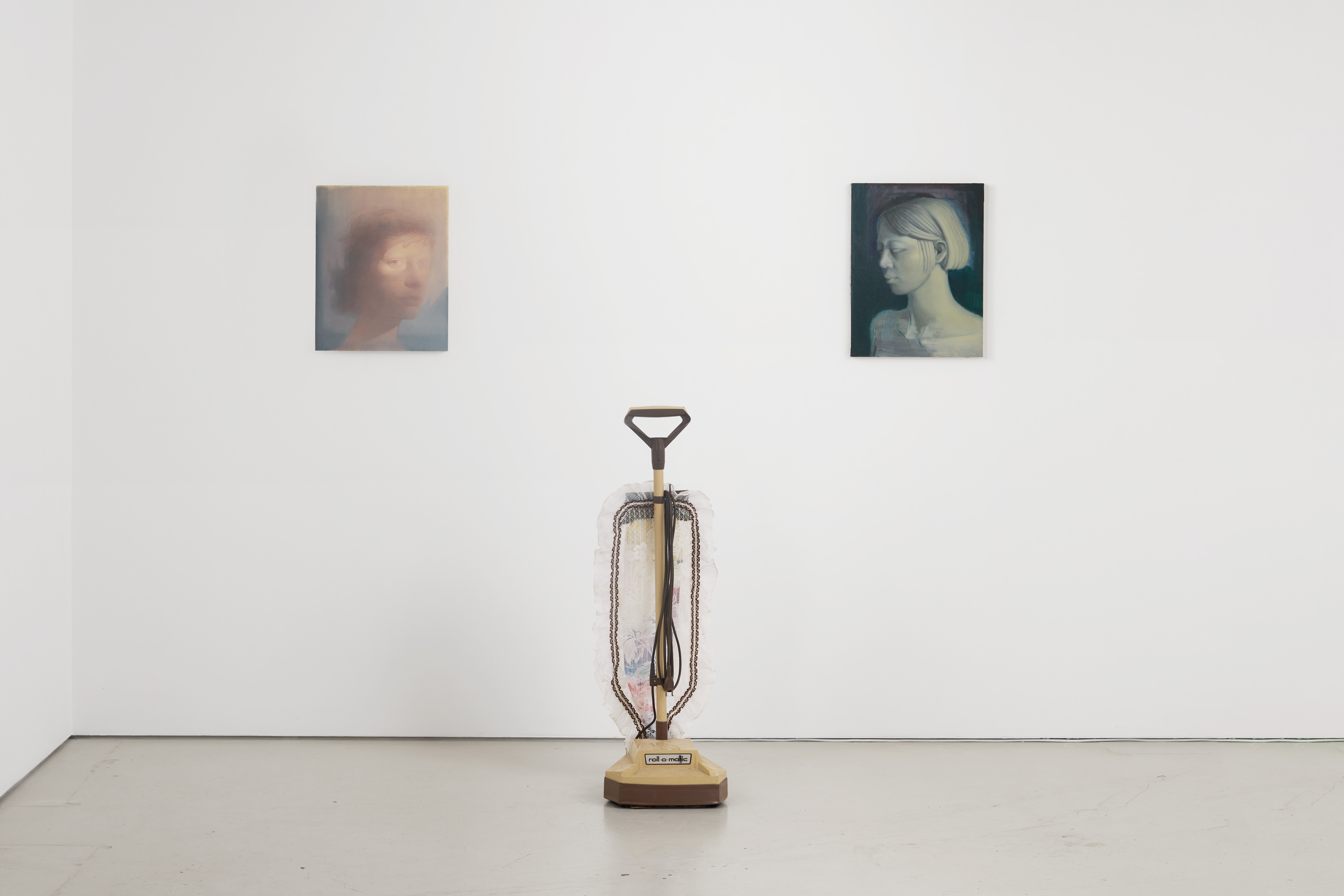
Special thanks to:
Samuele Visentin
Alice Amati
Rosalita Baldassin
Claudia Buraschi
Courtesy of the artist and Alice Amati, London | Photo Tom Carter
The House of Dorothy (2025) - solo show at the Istituto Svizzero, Milano (Italy)












































Special thanks to:
Lucrezia Calabrò Visconti
Tanguy Troubat
Maude Renevier
Michele Bertolino
Dafne Boggeri
Sandra Cane
Barbara Casavecchia
Claudia Buraschi
Flavia Parea
Mousse Magazine
Esquire Italia
Miart
Milan Design Week
Laura
Hsuan Lee
Tristan Bartolini
Philippe Buchs
Arthur Bigatel
Jeanne Caron
Ariane Grange
Marcel Rüdisühli
Simone Rüdisühli
Histoire Sans Chutes
Materiuum
HEAD Atelier Prototypage
HEAD Atelier Métal
Collectif Kimera
Souplex Atelier
Photos by Tanguy Troubat ©Souplex Atelier
Il Gioco dell’Oca di Dorothy (2025)
Il Gioco dell’Oca di Dorothy (2025) is an homage to Il Gioco dell’Oca di Milano (1981) which first appeared in the issue zero of Queer Italian magazine Babilonia. The original Milanese Goose Game was designed to indicate in a campy way the safe and dangerous spaces of the city - and sharing locations of various cruising spots to the gay community. This new version serves as an extension to the project The House of Dorothy (2025) - and helps the audience understand the reasoning and the stories behind the architecture and object that compose the latest version of the house.
It was first exhibited at the -> Istituto Svizzero of Milan curated by Lucrezia Calabro Visconti. It took part to the -> Miart programme and the Design Week as an extension to the -> House of Switzerland.
It has also been published in the April 2025 edition of -> Esquire Italia - divided in four to use as the cover pages of each chapter of the magazine.
Graphic design by Tanguy Troubat and Vincent Grange ©Souplex Atelier
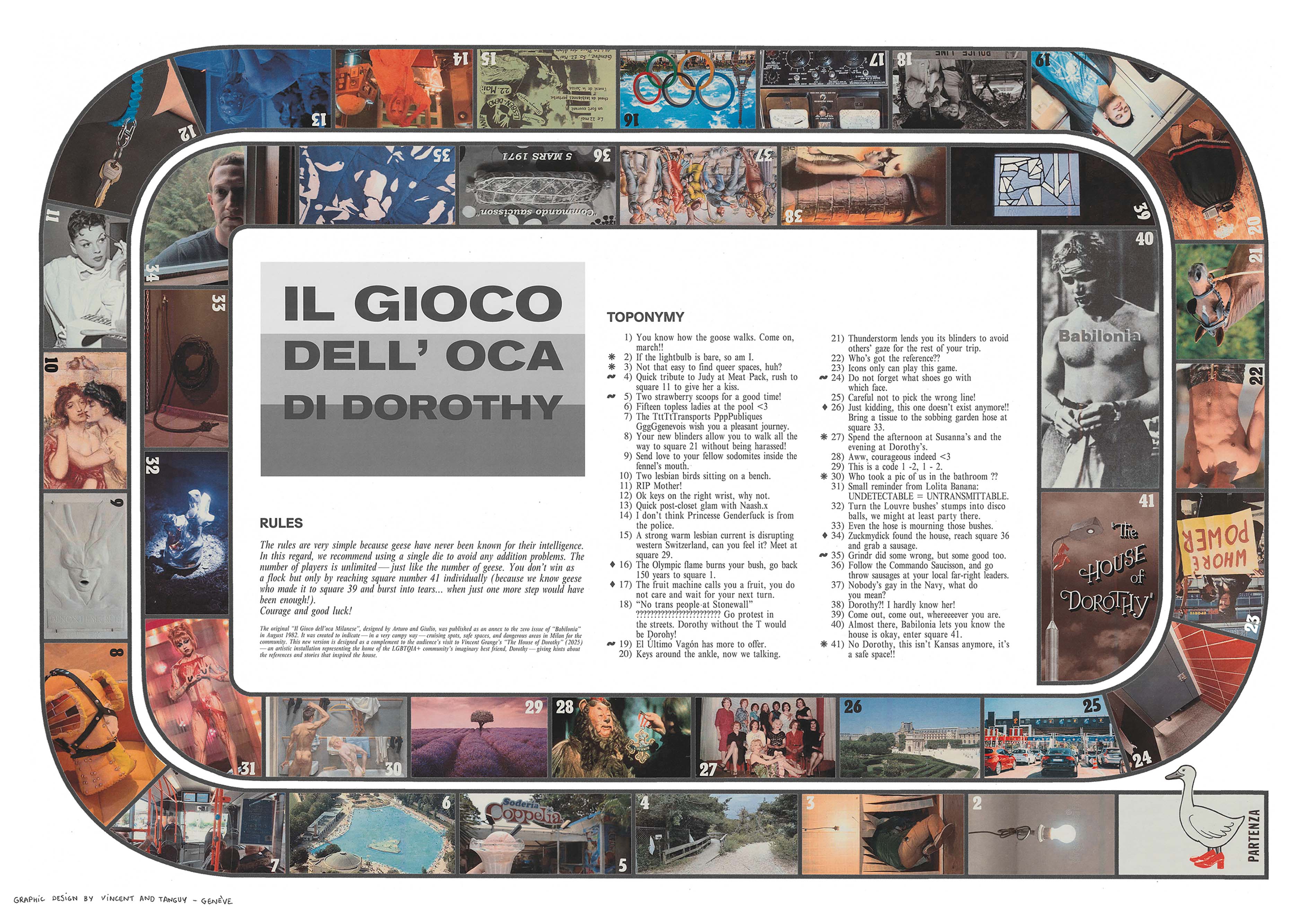



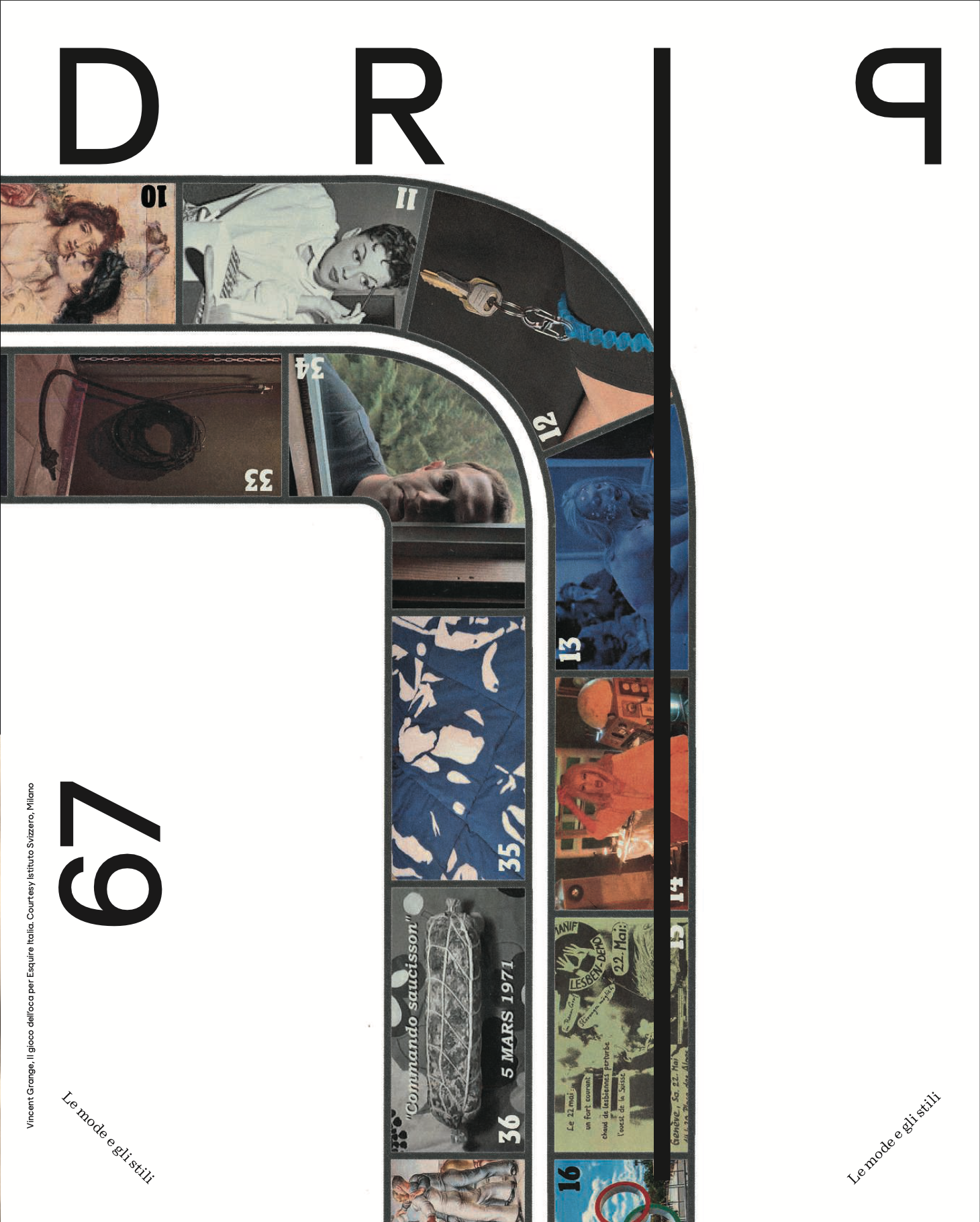

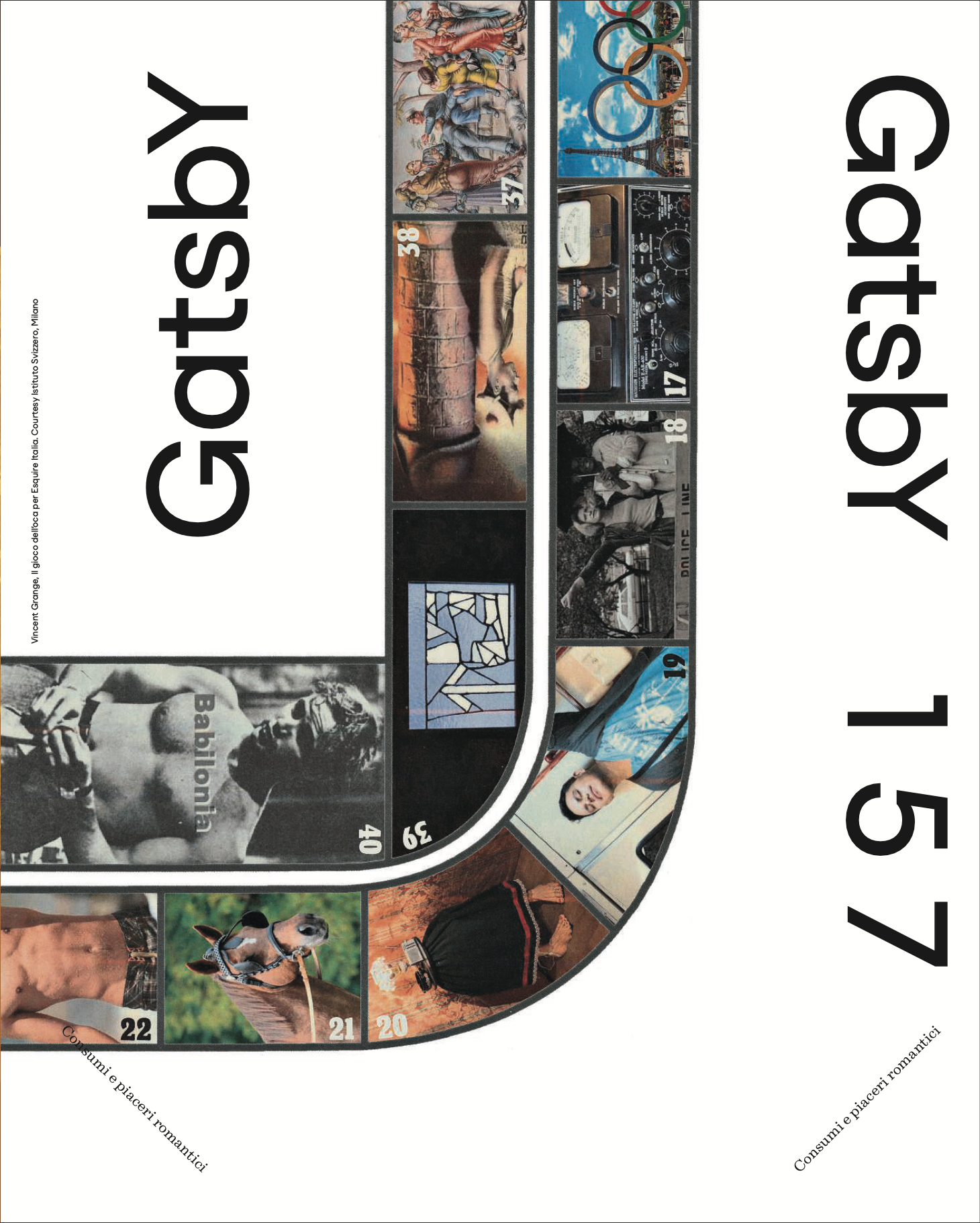



Special thanks to:
Tanguy Troubat
Francesco Ventralle
Lucrezia Calabro Visconti
Esquire Italia
Cristina D’Antonio
Photos by Tanguy Troubat ©Souplex Atelier
Dorothy’s Interior Boulevard (2025) - DesignHeads @Off-ArtGenève (Genève, CH)
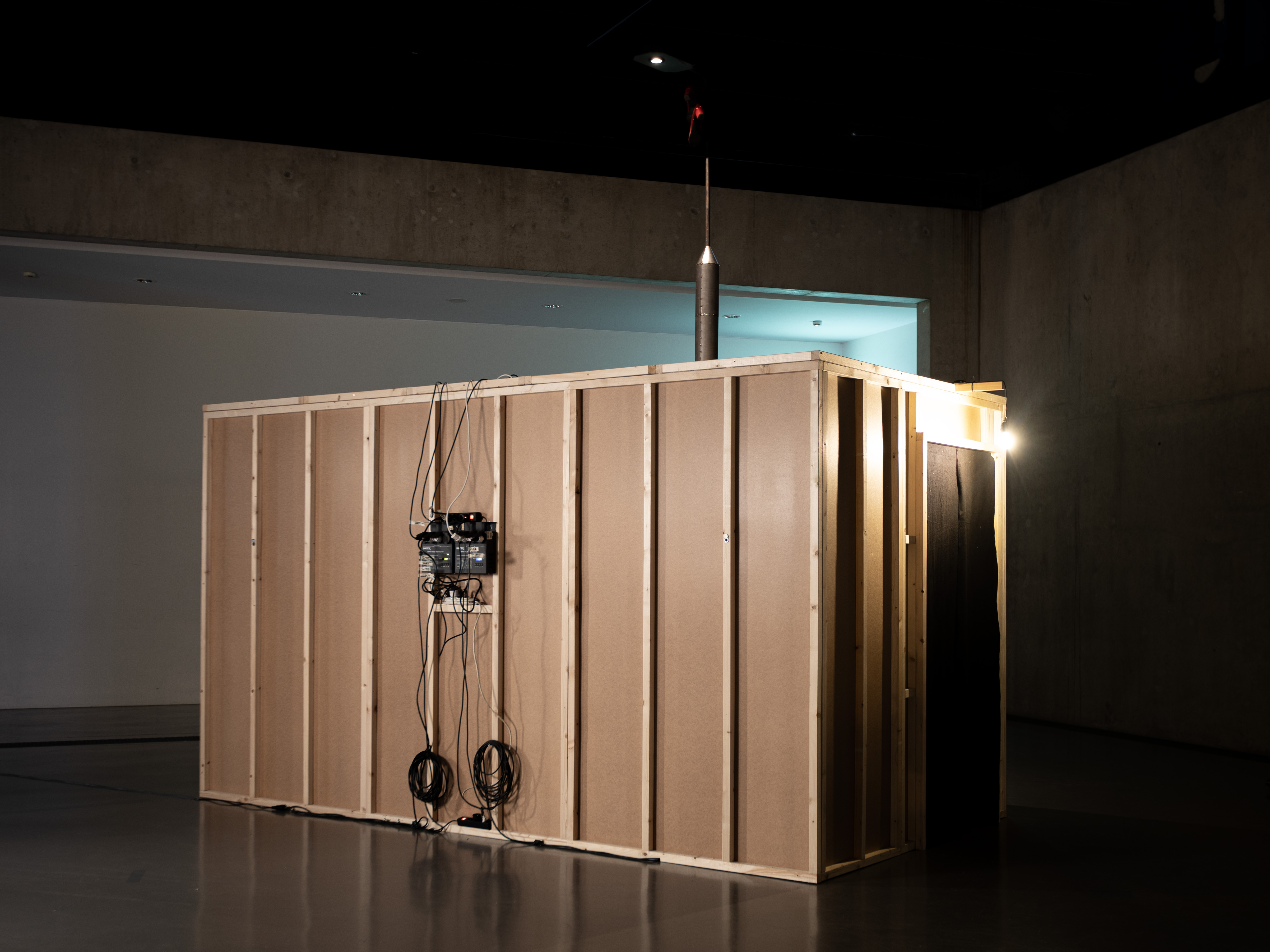
FR: Le Boulevard Intérieur de Dorothy (2025) est la dernière extension du projet artistique -> La Maison de Dorothy (2023), une installation qui présentait la maison de l’ami.e.x imaginaire de la communauté LGBTQIA+. Cette nouvelle pièce invite le public à réfléchir sur le ressenti des personnes queer dans l’espace public. Elle rend hommage aux multiples stratégies de résistance et de réappropriation dans un environnement urbain hostile. Elle a été présentée pour la première fois à l’occasion de l’exposition des lauréat.e.x.s de la ->Bourse Déliée du Fonds Cantonal d’Art Contemporain (FCAC), au Cube à la HEAD Genève, en janvier 2025.
-> Texte critique de l’historien de l’art Damien Delille
EN: Dorothy's Interior Boulevard (2025) is the latest extension of the artistic project -> The House of Dorothy (2023), a life-sized installation that showcased the home of the LGBTQIA+ community's imaginary best friend. This new room invites the public to reflect on the experiences of queer individuals in public spaces. It honors the many strategies of resistance and reclamation within a hostile urban environment. It was first presented during the exhibition of the laureates of the Bourse Déliée of the Fonds Cantonal d’Art Contemporain (FCAC), at the Cube HEAD Genève, in January 2025.

FR: Pensé comme un terrarium, le Boulevard Intérieur recrée un espace extérieur propice à l’expérimentation. Cette fausse voie publique offre aux invité.e.x.s de Dorothy un lieu où iels peuvent s’entraîner à marcher sous le poids du regard des autres, explorant ainsi la tension entre visibilité et vulnérabilité. L’architecture, les couleurs et les objets qui composent cet espace rendent hommage à divers lieux queers historiques et contemporains.
Parmi ces références, on trouve la glacerie emblématique Coppelia à Cuba, qui devint un lieu de rencontre codifié pour la communauté homosexuelle des années 1970. Commander une glace à la fraise à Coppelia Soderia servait de code pour indiquer son appartenance ou ses intentions.
Une autre référence majeure est le labyrinthe de buissons du Parc des Tuileries à Paris - réputé comme l’un des plus anciens et incontournables espaces de cruising. Récemment rasées à l’occasion des Jeux Olympiques 2024, les souches de ces buissons, pleurées par un tuyau d’arrosage en deuil, se métamorphosent ici en accessoires de fête.
Le Boulevard Intérieur devient ainsi un lieu de mémoire, d’expérimentation et de réappropriation. Entre gravité et célébration, il explore la dualité de la fierté et de la prudence tout en utilisant l’absurde pour questionner les normes et dénoncer l’injustice. L’installation devient un terrain de réflexion sur les manières dont les personnes queer transforment des environnements oppressifs en espaces de résistance et d’affirmation.
EN: Conceived as a terrarium, Dorothy's Interior Boulevard recreates an outdoor space conducive to experimentation. This artificial public thoroughfare offers Dorothy's guests a place to practice walking under the weight of others' gaze, exploring the tension between visibility and vulnerability. The architecture, colors, and objects that make up this space pay homage to various historical and contemporary queer locations.
Among these references is the iconic Coppelia ice cream parlor in Cuba, which became a coded meeting place for the gay community in the 1970s. Ordering a strawberry ice cream at Coppelia Sodería served as a discreet way to signal one’s identity or intentions.
Another major reference is the hedge maze in the Tuileries Garden in Paris—renowned as one of the oldest and most significant cruising spaces. Recently cleared for the 2024 Olympic Games, the stumps of these hedges, mourned by a grieving garden hose, are transformed here into party props.
Dorothy's Interior Boulevard thus becomes a site of memory, experimentation, and reclamation. Balancing gravity and celebration, it explores the duality of pride and caution while using absurdity to challenge norms and denounce injustice. The installation serves as a space for reflection on how queer individuals transform oppressive environments into arenas of resistance and self-affirmation.


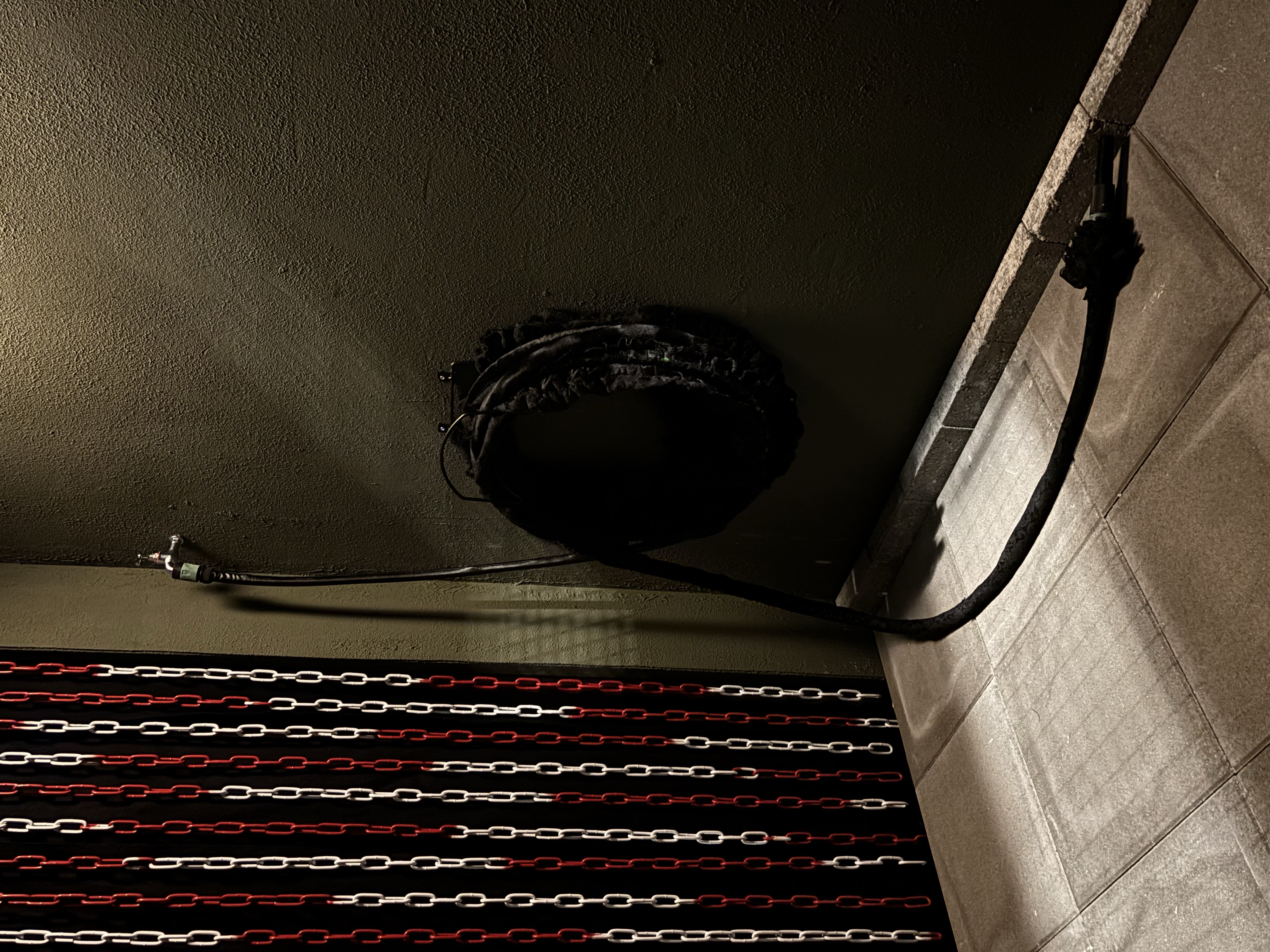
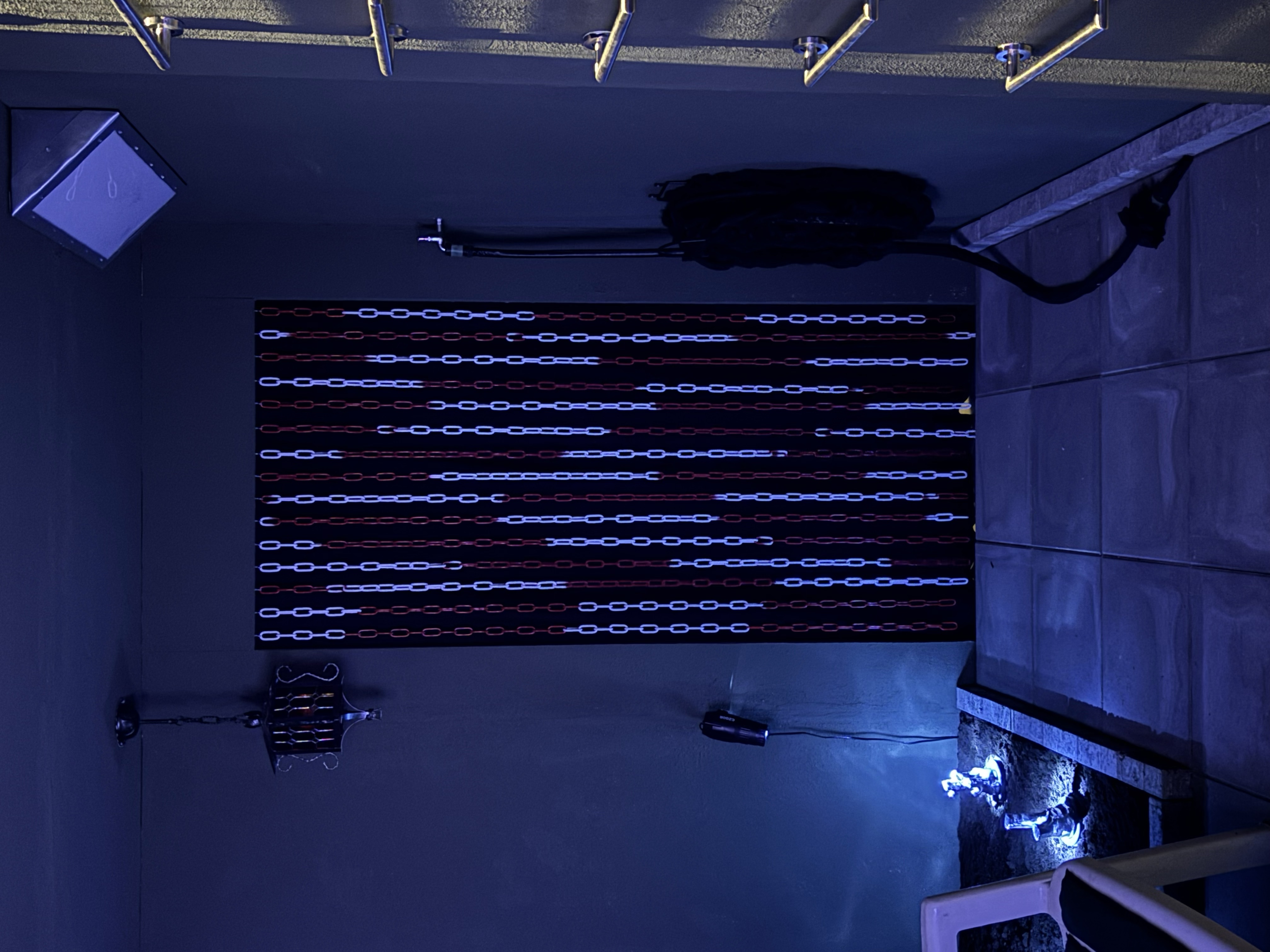


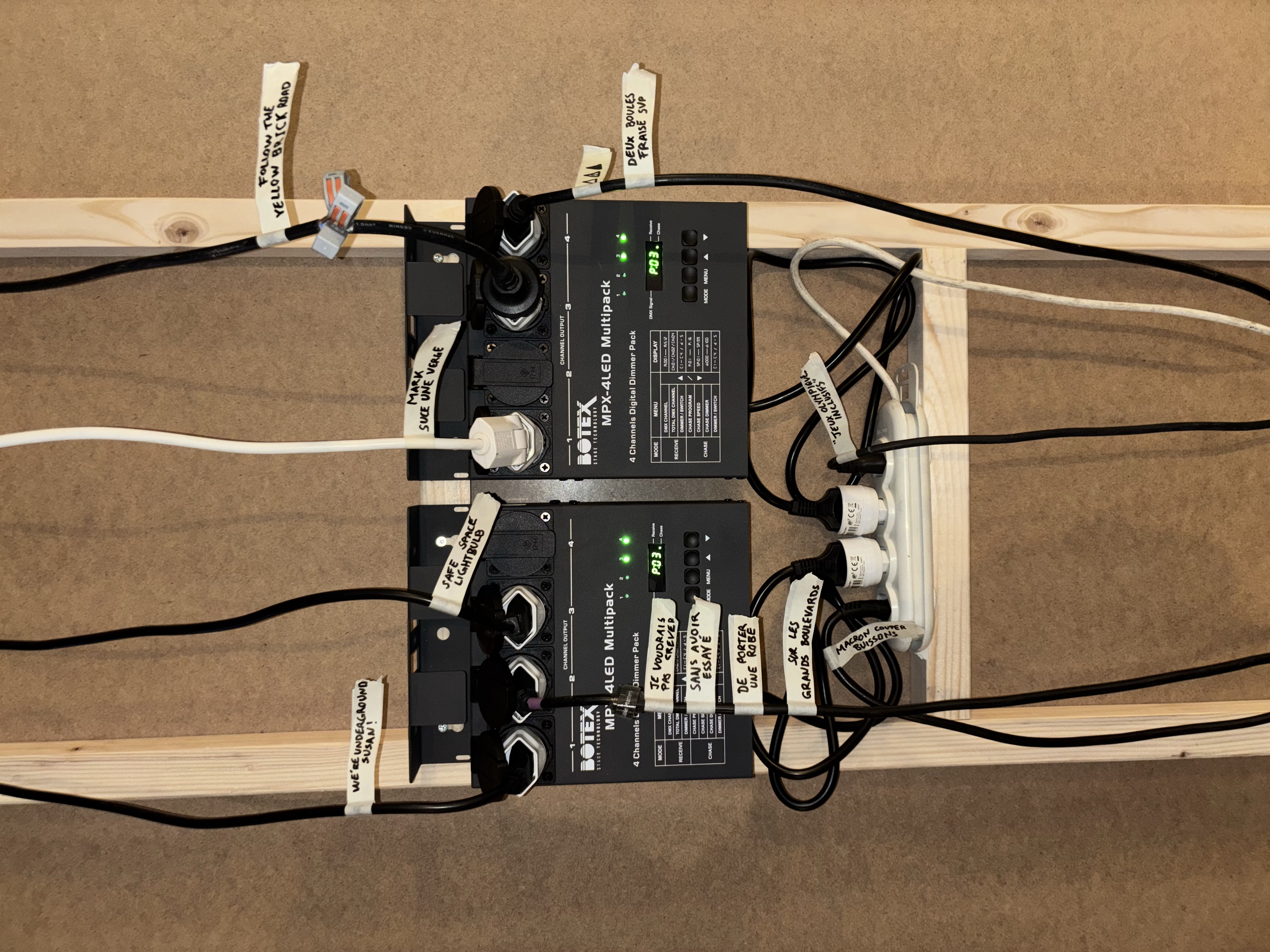
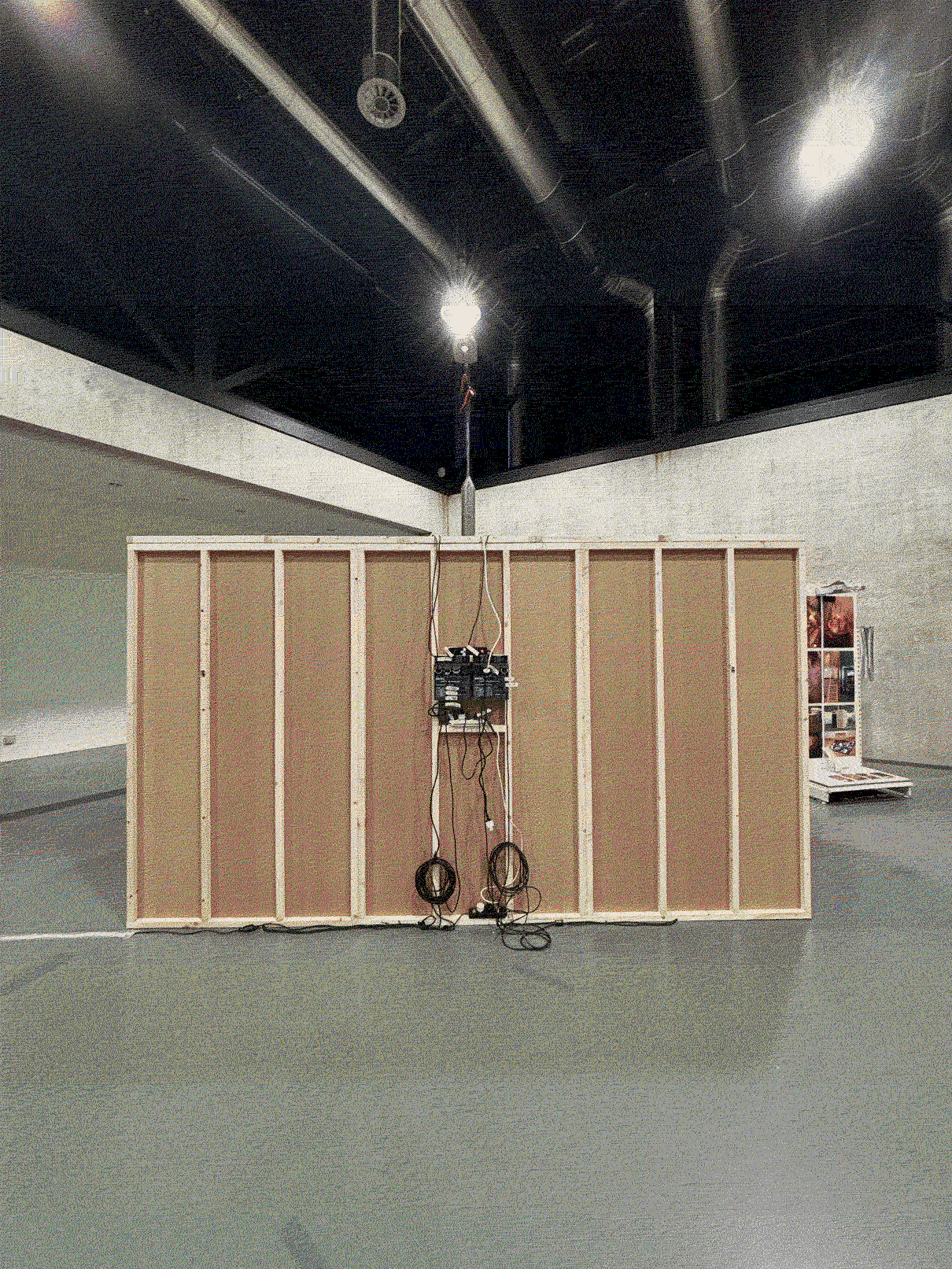
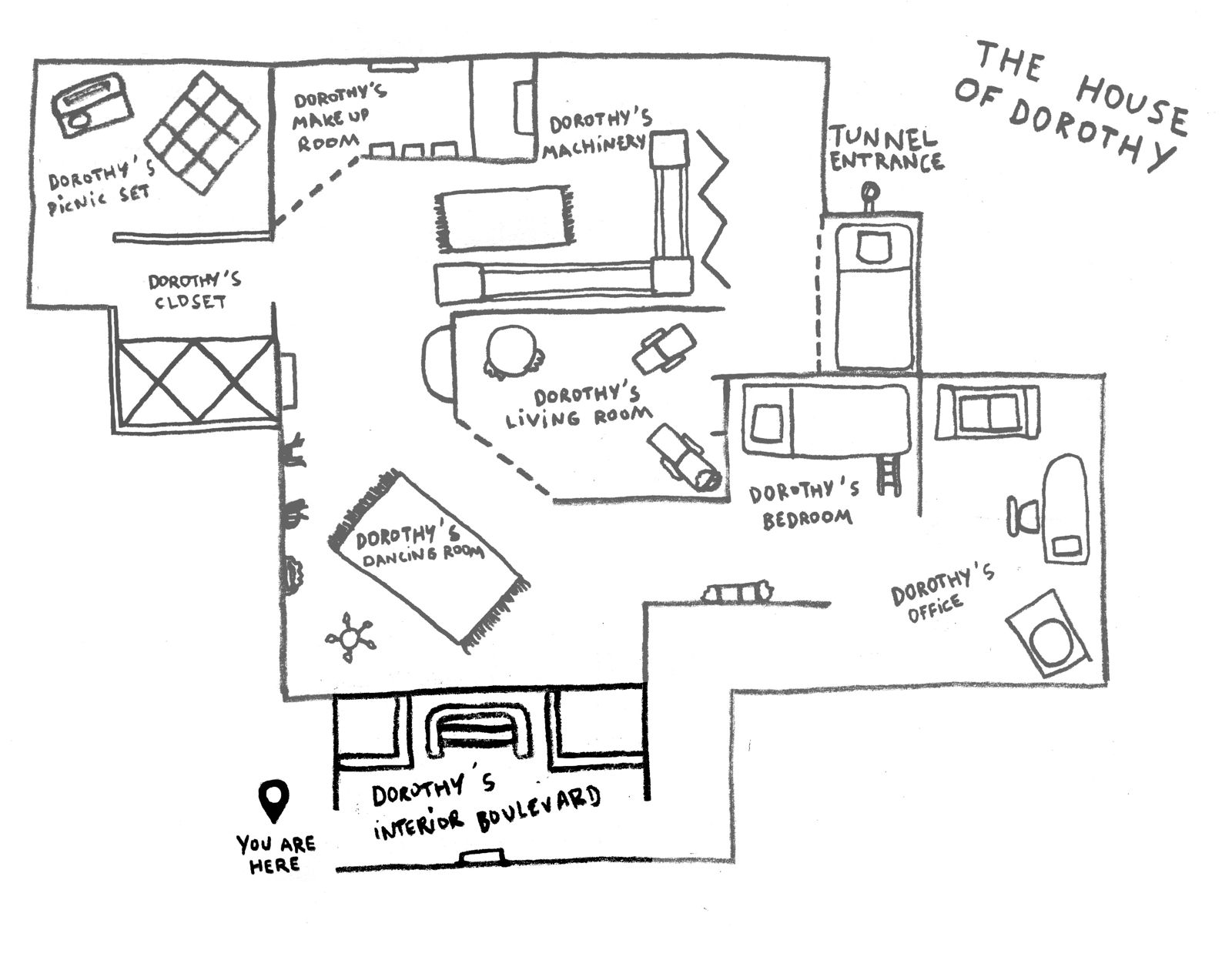 Special thanks to:
Special thanks to:Maude Renevier
Tanguy Troubat
Collectif Kimera
Alice Botelho
Joanna Haefeli
Karen Pisoni
HEAD Atelier Métal
HEAD Atelier Impression
Photos ©Souplex Atelier
Dorothy’s Closet (2024) - Double Agent: Do you speak Flowers ? @BIO28 (Ljubljana, Slovenia)
Dorothy’s Closet was awarded the ->Kiefer Hablitzel Göhner Prize at the Swiss Art Awards at ArtBasel in 2024. It then teleported to Slovenia for the 28th edition of the ->Biennale of Design of Ljubljana (BIO28), curated by Alexandra Midal. The exhibition is open until April 6 2025!
On November 22nd 2024, Dorothy welcomed Macedonian artist ->Naash.x inside her Closet for a very special performance.
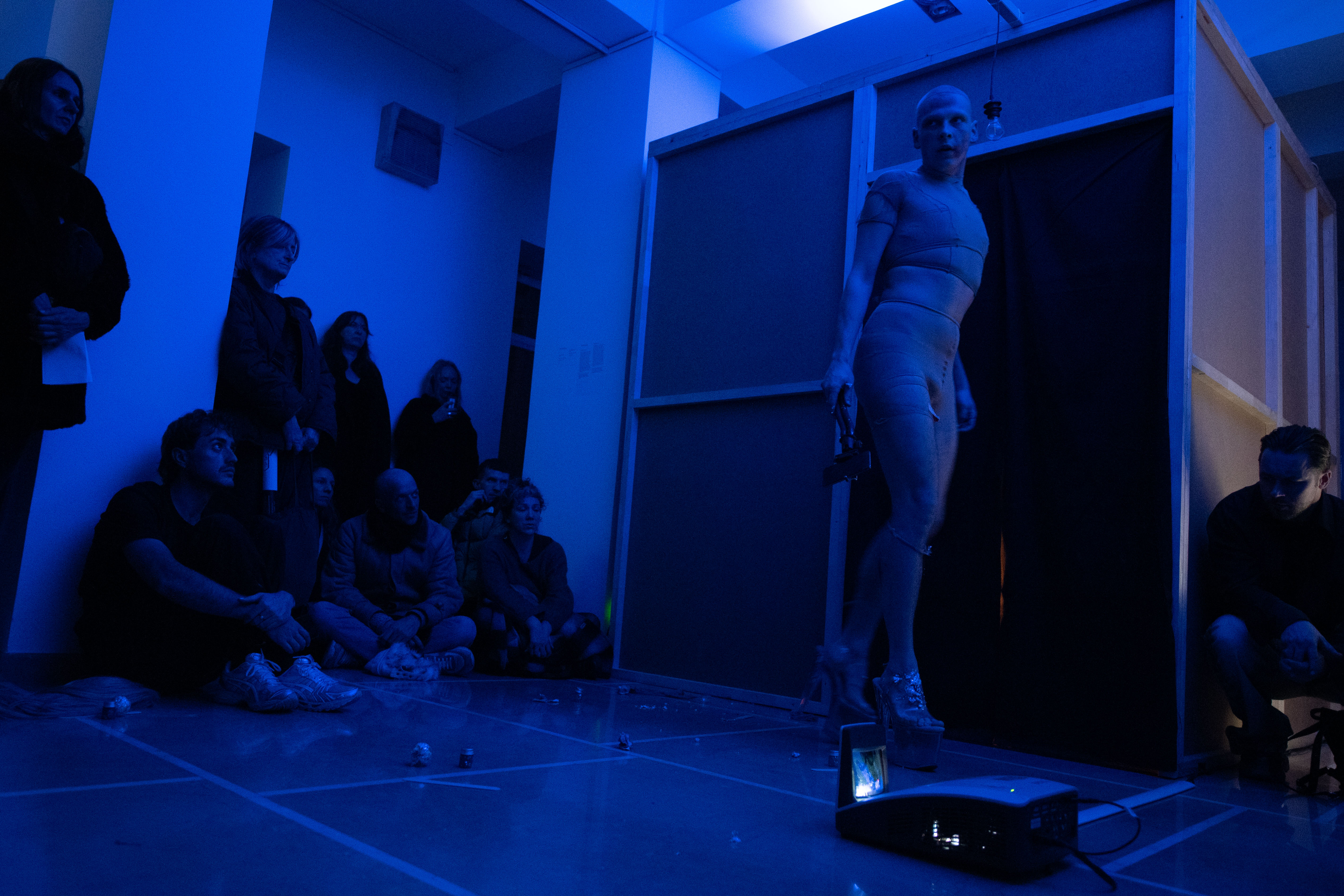
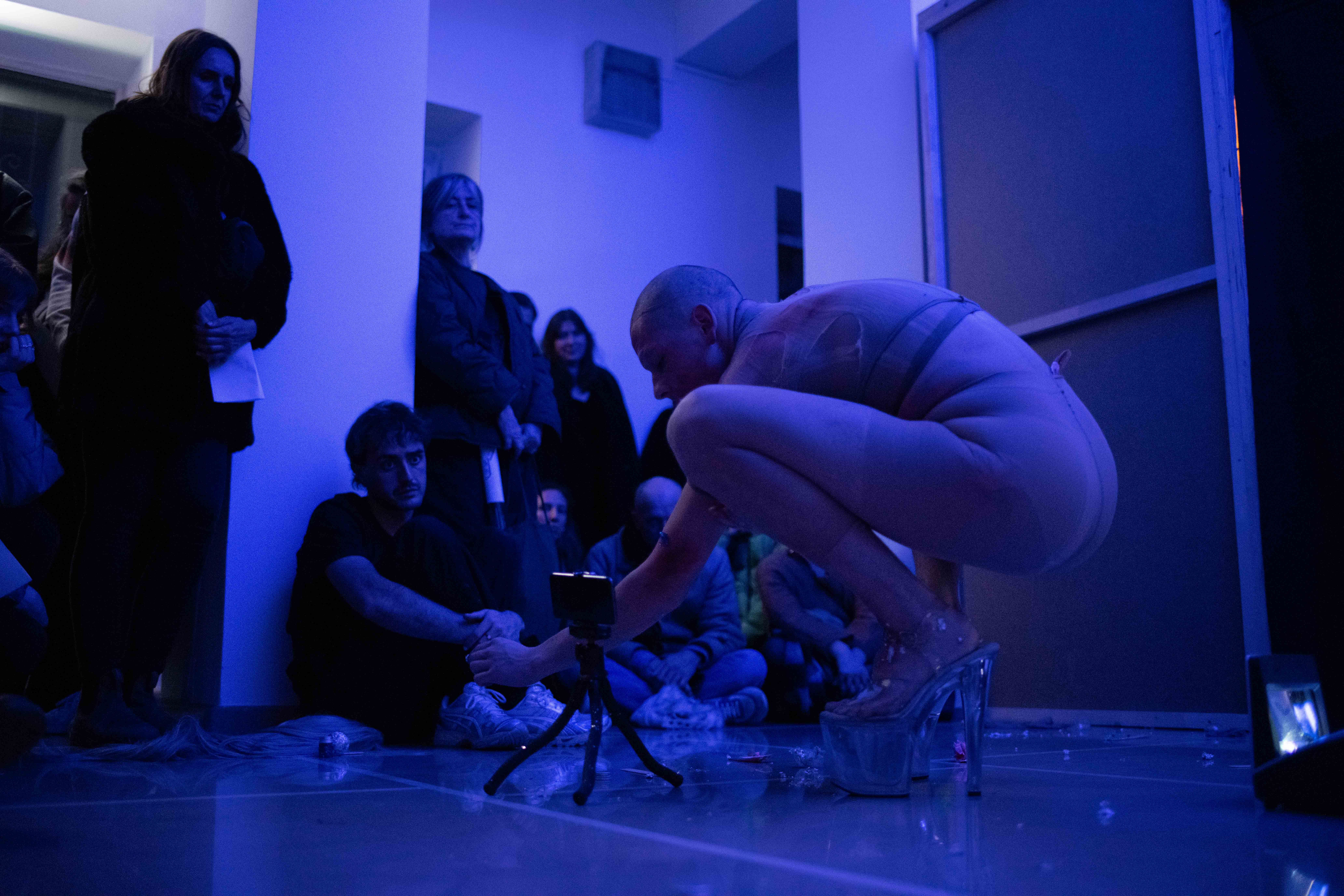
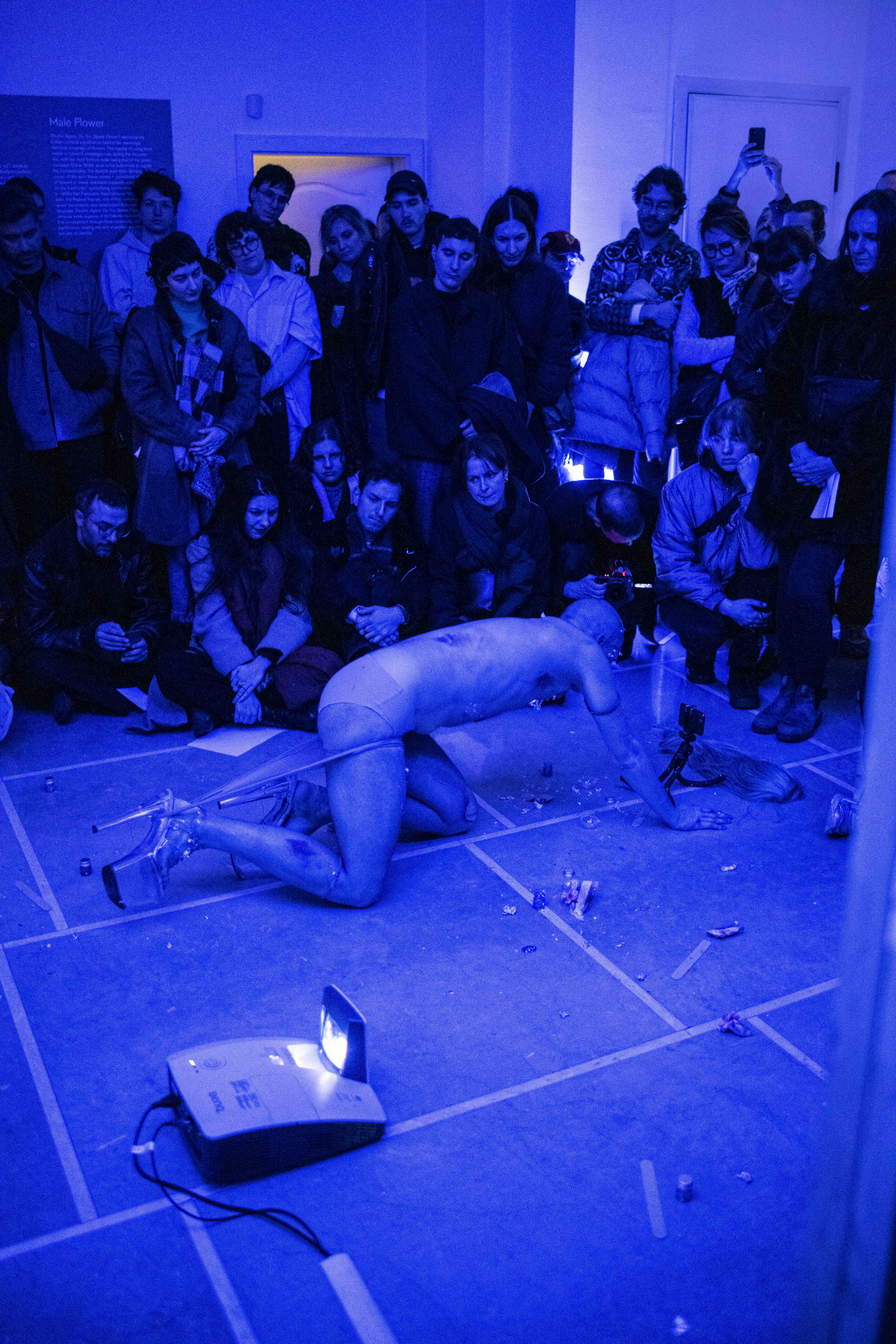
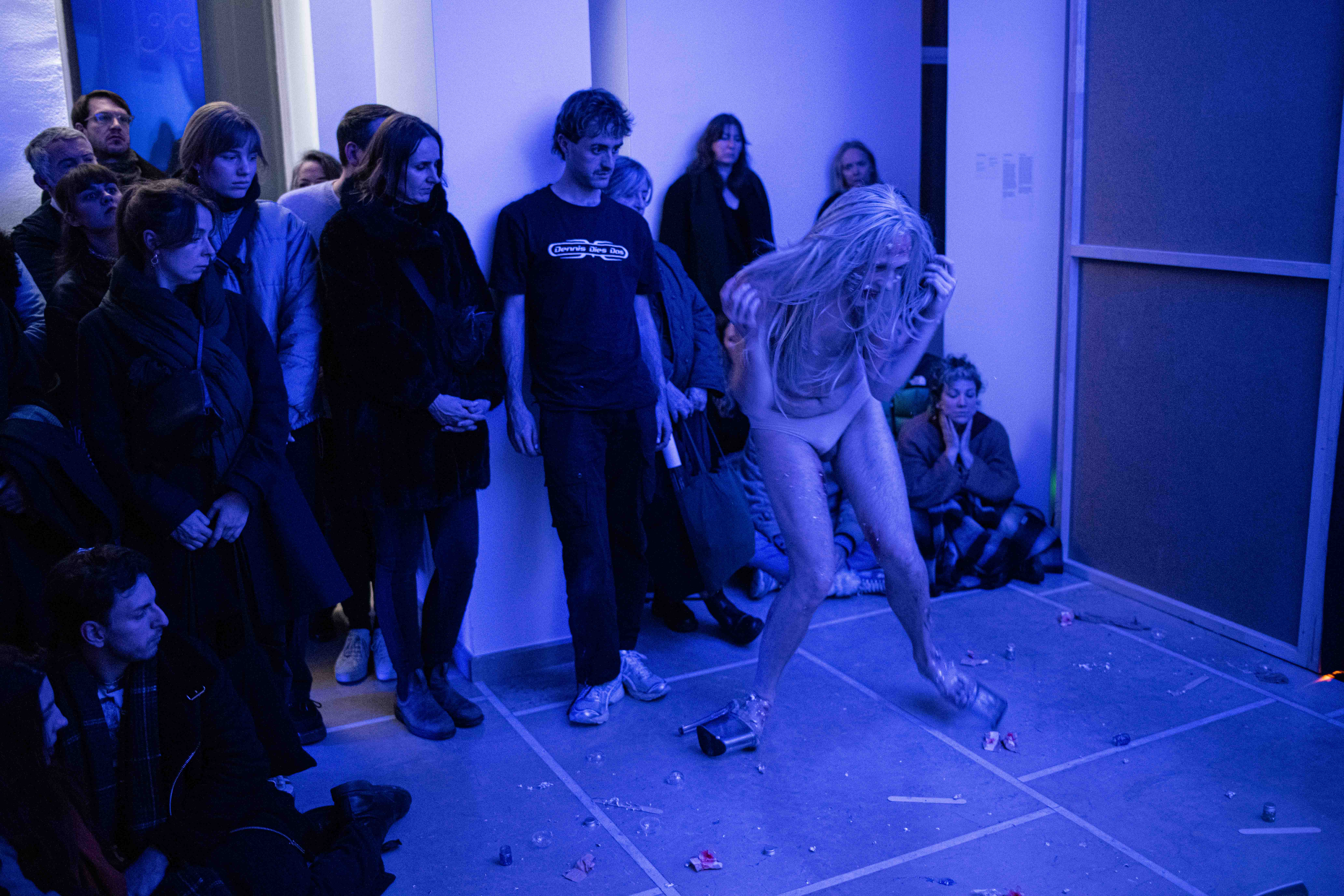

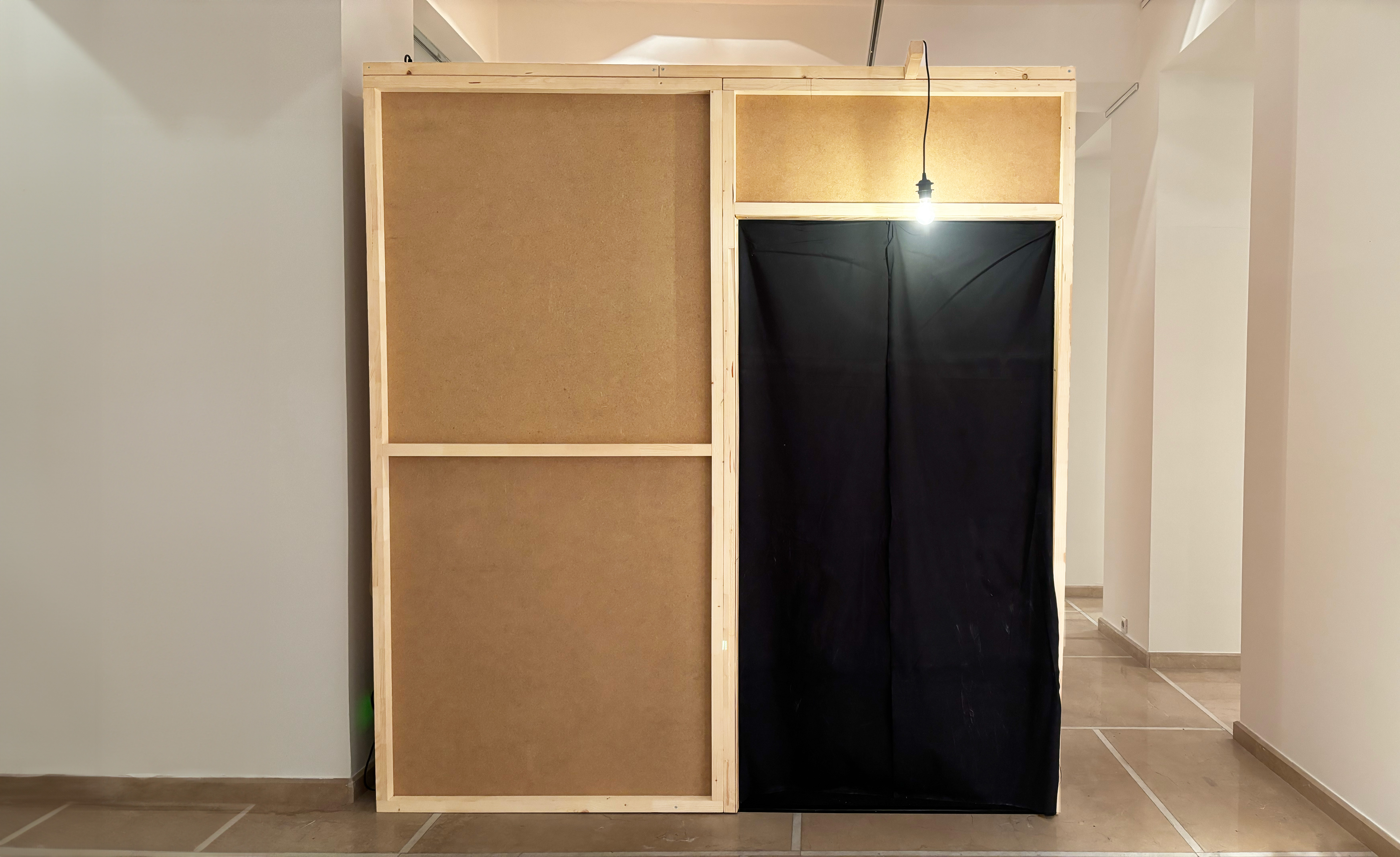
Special thanks to:
Naash.x
Alexandra Midal
Emma Pflieger
The whole team of BIO28
Anja Radovic
Matjaz Brulc
Gregor Gobec
Collectif Kimera
Photos ©BIO28 predstava and ©Souplex Atelier
